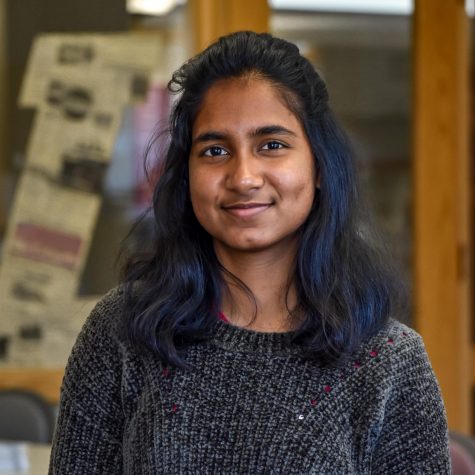Art may not come to mind as the most immediate form of expression for math students, but for Jane Fergusson ’21, both seamlessly blend together.
Fergusson said that she developed an affinity for art at a very young age. As a preschooler, she said she remembers a day where she started drawing a black-eyed Susan in her class.
“I realized that even though I was looking at a flower and I knew what it looks like…I sort of started to understand perspective,” Fergusson said. “I realized that I actually can’t see all of the petals, even though I know they’re there.”
This curious observation, Fergusson explained, inspired a love for art in her that has continued until now.
And art influences the way she thinks about other things, too, she said. Fergusson explained how her senior thesis for math has drawn influences from art, which is also her second major.
“The thesis that I’m writing for [my math] major is on cellular automaton and the hotchpotch machine…it’s a very visual thing…you have these ideas about life on a grid basically, and it’s used to model epidemiological phenomenon, like COVID-19,” Fergusson said. “It has these really strong visual implications too…so they kind of work together in my brain…it just all fits.”
Reflecting on the sources of inspiration for her work, Fergusson explained that she also draws influences from the authors and books she reads.
“I read a lot, and I read all types. I love poetry, creative non-fiction…I try to just read as much as I can,” Fergusson said.
She explained that the project she worked on last fall was about the effects of COVID-19 on changing emotional topography. The project, which used sand as a medium, was based off of author Annie Dillard’s book, “For the Time Being.”
“At one point, [Dillard] makes the observation that we’re always excavating ourselves like when we dust the bookshelf or take a shower to get the dirt off. There are constantly these layers of dust that are falling onto us…and we’re always just trying to get out,” Fergusson said. “So, a lot of the ideas about sand actually come from her book, even though she’s not a visual artist.’
Fergusson is still working on her art thesis, a continuation of her work with sand from last semester. Her approach, however, has changed slightly.
“All that work with setting things down, building things up was done on canvas, which I think is maybe not the best support for that type of work. So, I’m trying to live away from that…and get a bit more sculptural in the way that I’m building and presenting,” Fergusson said.
Her work from last semester was featured in the Lafayette Art Gallery in the Williams Arts Center.



























































































































